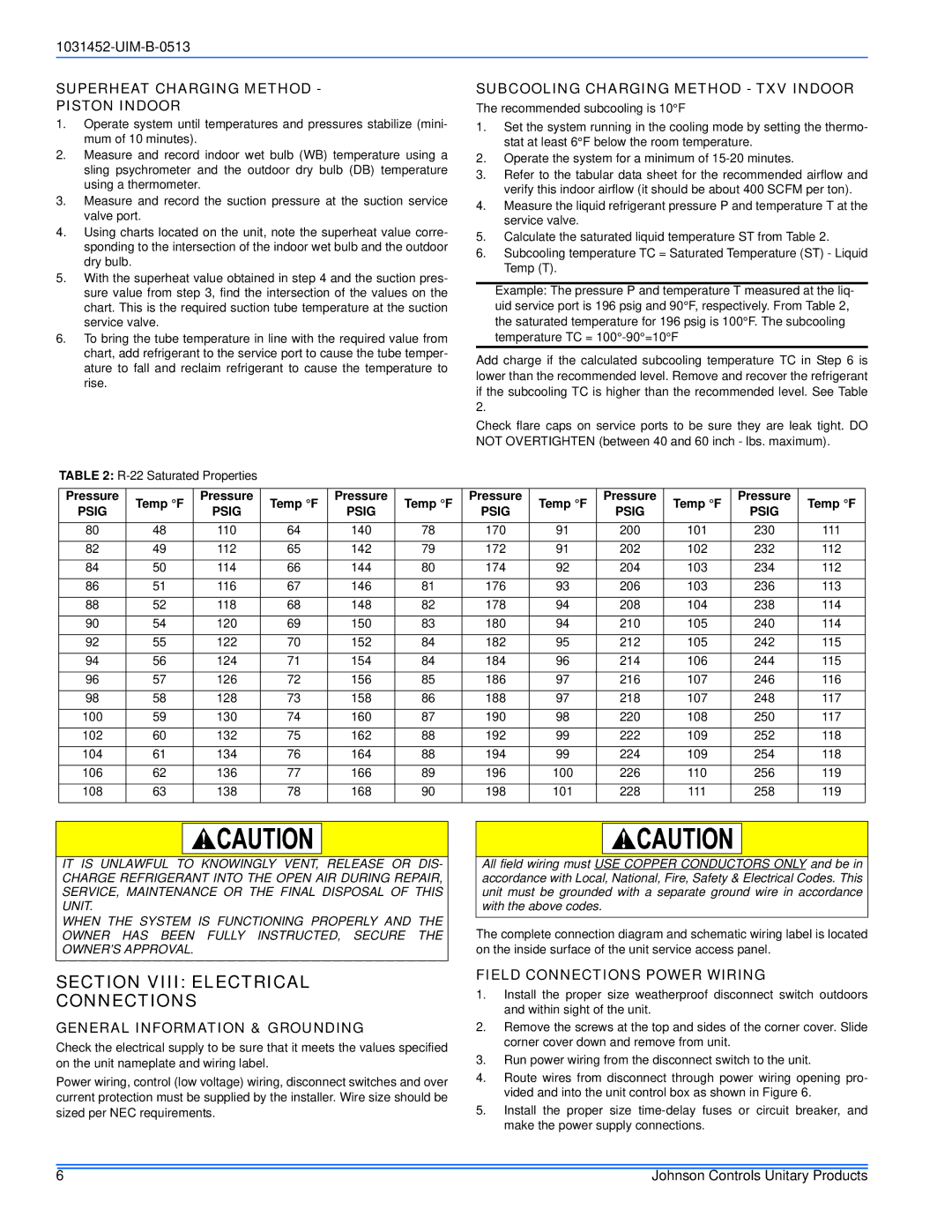13 SEER - GCGD specifications
Johnson Controls has long been recognized as a leader in the HVAC industry, and their 13 SEER - GCGD model encapsulates the company's commitment to energy efficiency, innovation, and user comfort. The GCGD, designed for residential applications, offers a balanced combination of performance and value, making it an excellent choice for homeowners looking to enhance their indoor environment.One of the standout features of the 13 SEER - GCGD is its Seasonal Energy Efficiency Ratio (SEER) rating of 13, which categorizes it as an energy-efficient cooling system. This rating translates to substantial energy savings when compared to older, less efficient units, allowing users to reduce both their environmental impact and utility bills. Moreover, this unit is designed to perform efficiently in a variety of weather conditions, ensuring reliable cooling throughout the peak summer months.
At the heart of the GCGD is its advanced scroll compressor, known for its quiet operation and durability. This technology minimizes noise disturbances while efficiently compressing the refrigerant to optimize cooling performance. Additionally, the unit incorporates a compact design, allowing for easier installation in tight spaces, making it suitable for various residential settings.
Another significant characteristic of the GCGD is its use of high-quality components, including a robust cabinet construction designed to withstand the elements. This ensures long-term reliability and protection against outdoor conditions, thus extending the lifespan of the unit. The use of corrosion-resistant materials further enhances durability, reducing maintenance needs and costs over time.
The GCGD also features user-friendly controls, which enable homeowners to easily set their desired temperature and operating mode. Optional smart thermostats can be integrated, providing advanced control and energy management solutions that cater to modern lifestyle requirements. This compatibility with smart technology aligns with the growing trend towards home automation, allowing homeowners to manage their comfort efficiently.
In summary, Johnson Controls' 13 SEER - GCGD model offers an appealing solution for those in search of an energy-efficient and reliable air conditioning system. With its optimal SEER rating, advanced compressor technology, robust construction, and user-friendly design, the GCGD stands out as a practical choice for households looking to enhance their cooling capability while being mindful of energy consumption. This model not only promises comfort but also contributes positively to a sustainable future.

